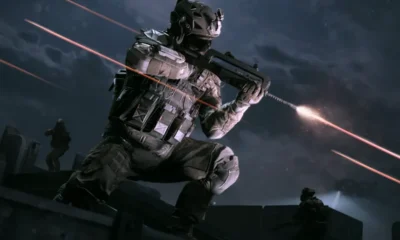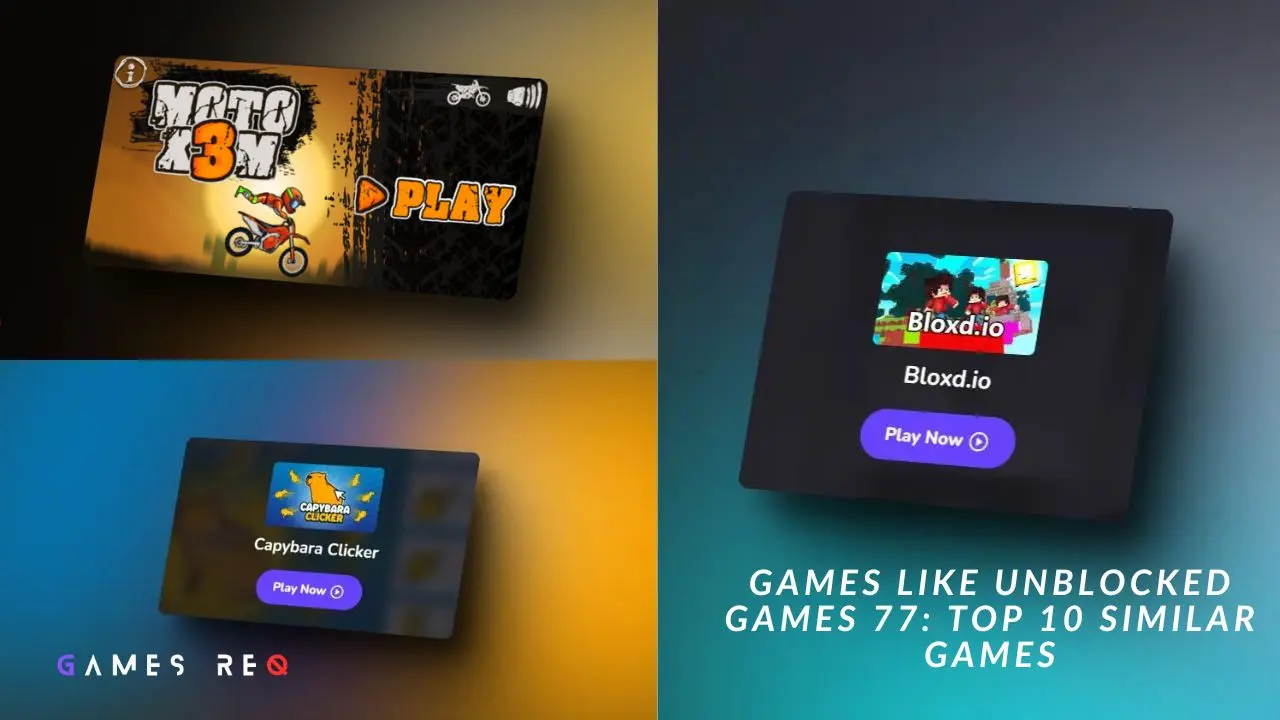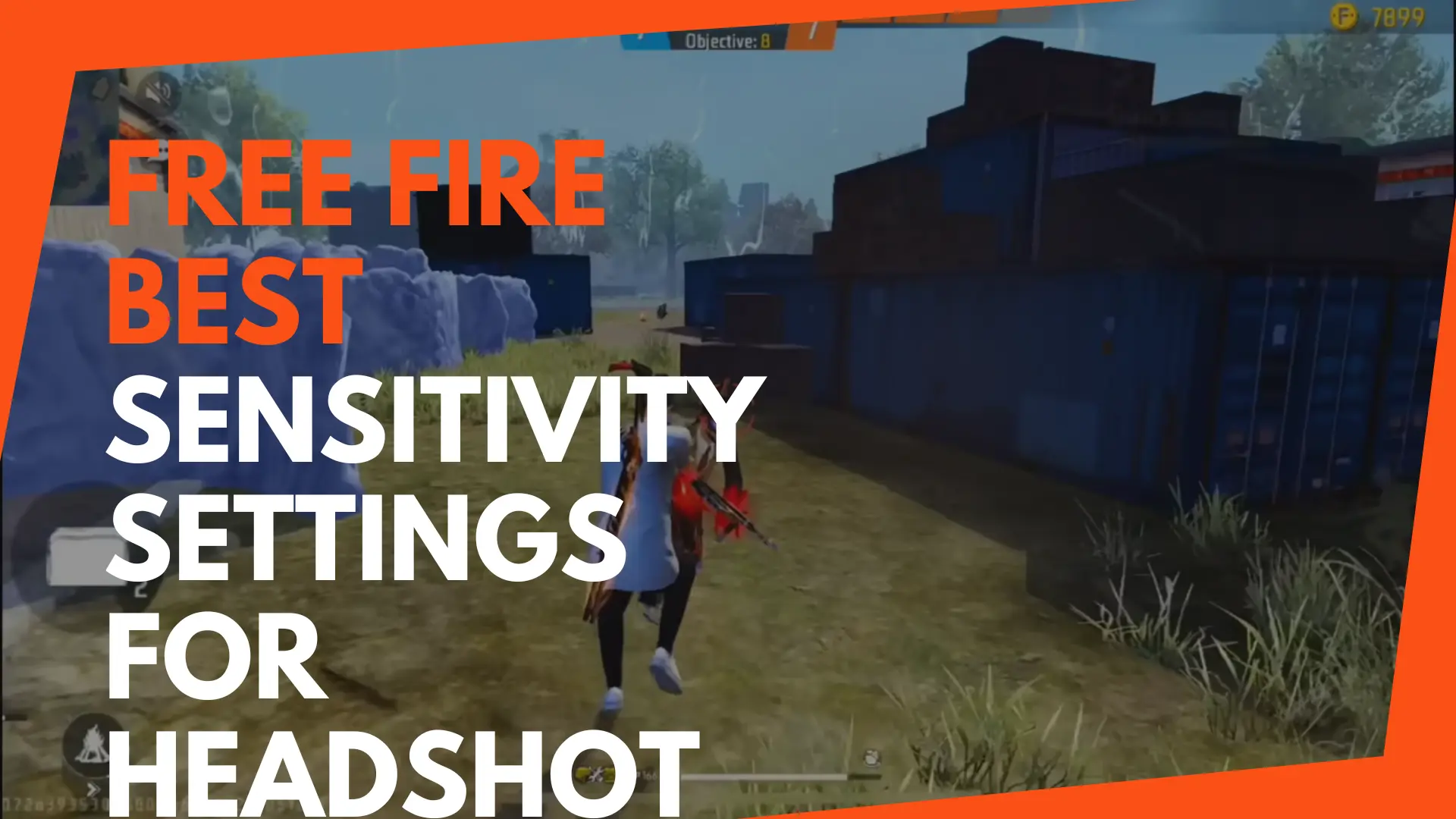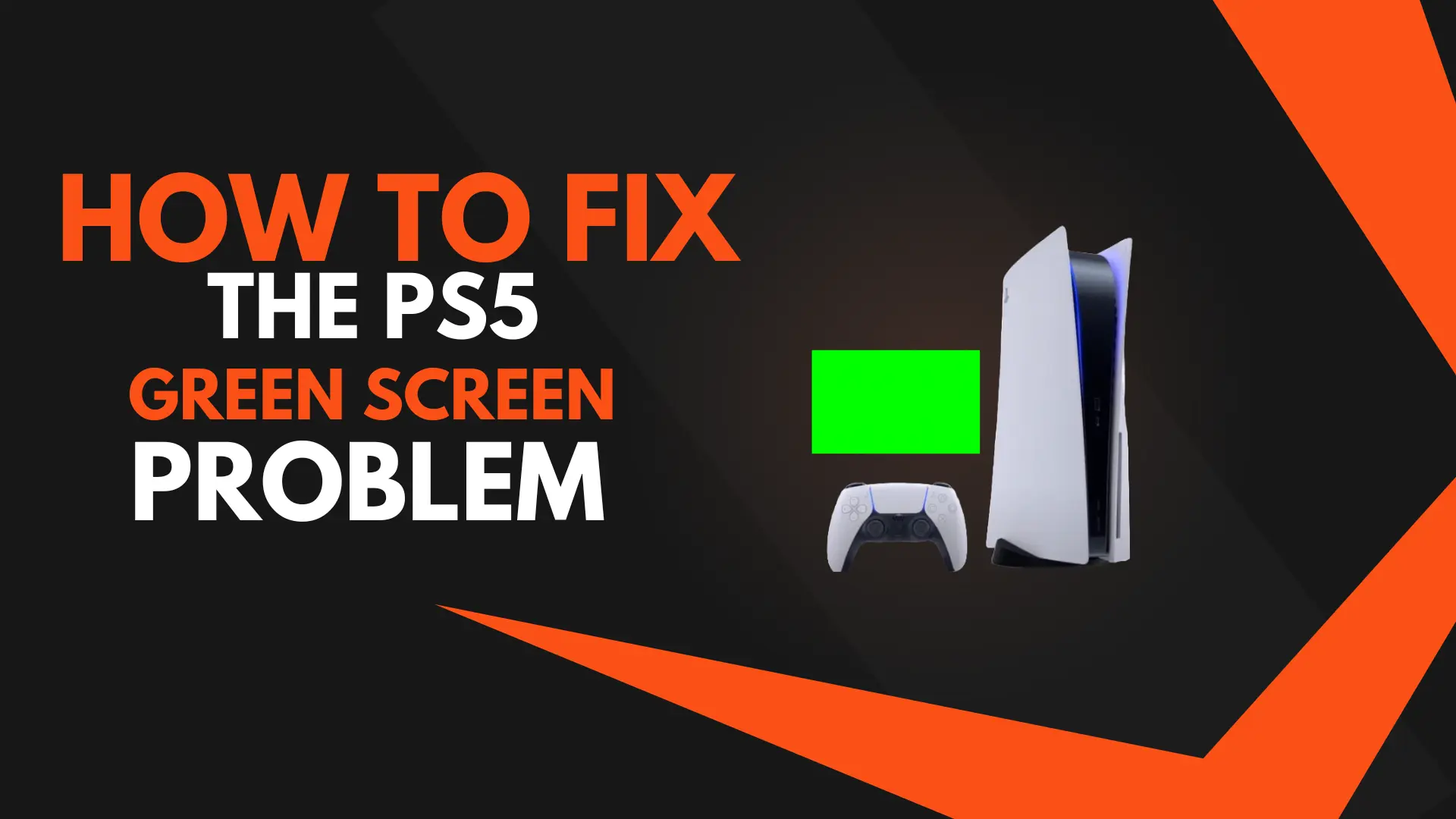Review
Smoke MK11: What Happened to Smoke in Mortal Kombat 11?
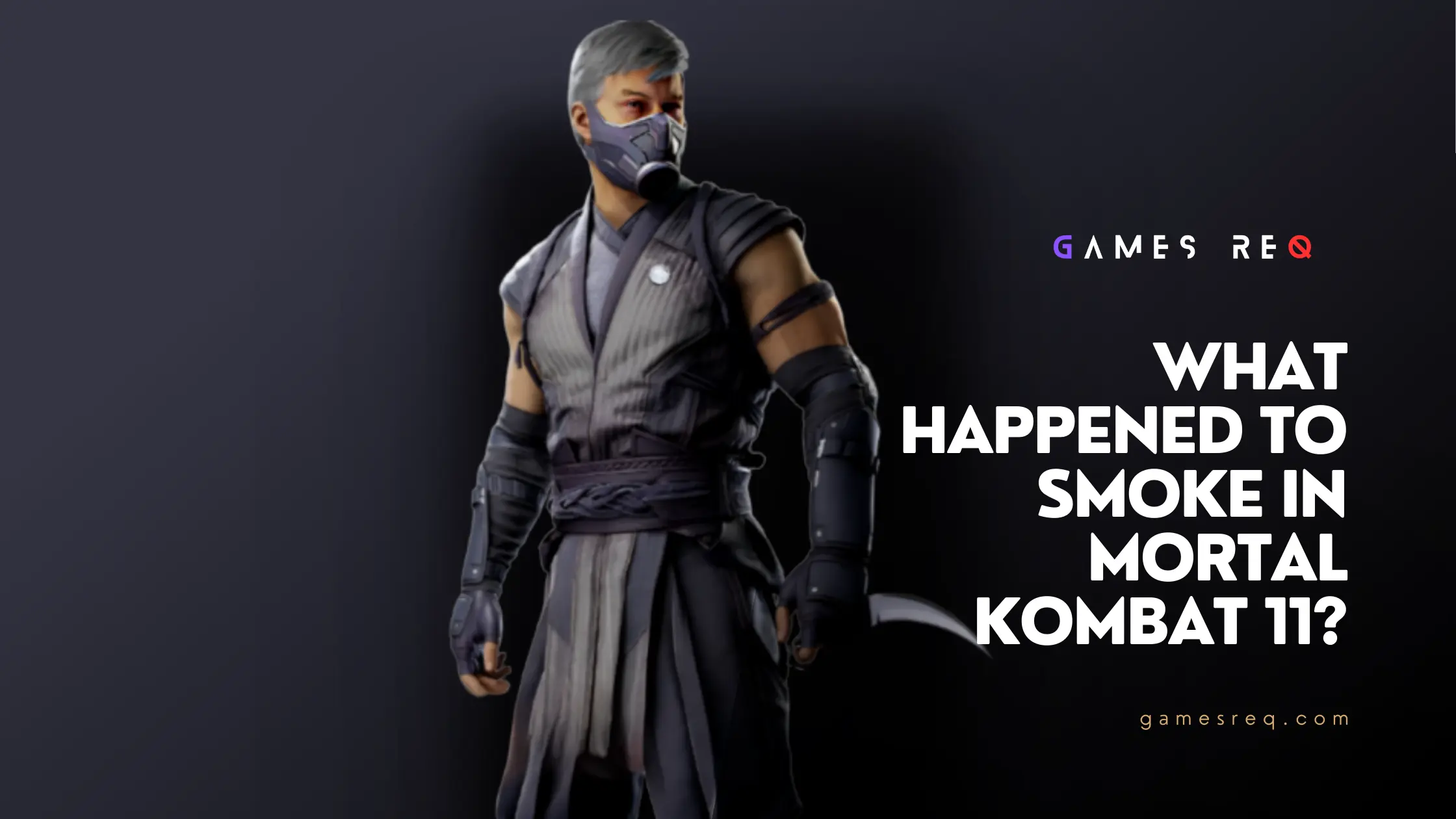
Smoke is one of the most iconic and beloved characters in the Mortal Kombat franchise. This cybernetic ninja has been a fan favourite ever since his debut as a secret character in Mortal Kombat II. However, to the dismay of many dedicated Smoke mains, this stealthy fighter was notably absent from MK11’s roster of playable characters. While he made minor cameos in the game’s story mode and Krypt area, these brief appearances were not enough to satisfy players eager to battle with Smoke once again.
Smoke’s Backstory: From Hidden Gem to Robotic Warrior
For those unfamiliar with his origins, Smoke started out as a hidden character in MK2 before becoming a playable fighter in MK3. In that game, his backstory revealed he was actually a human assassin named Tomas Vrbada whose soul was trapped in the body of a cyborg.
Smoke’s inner turmoil as a human struggling against his mechanized form made him a fan favourite and added depth to his character. His last appearance as a fully playable fighter was in MK9, where he returned to his human form.
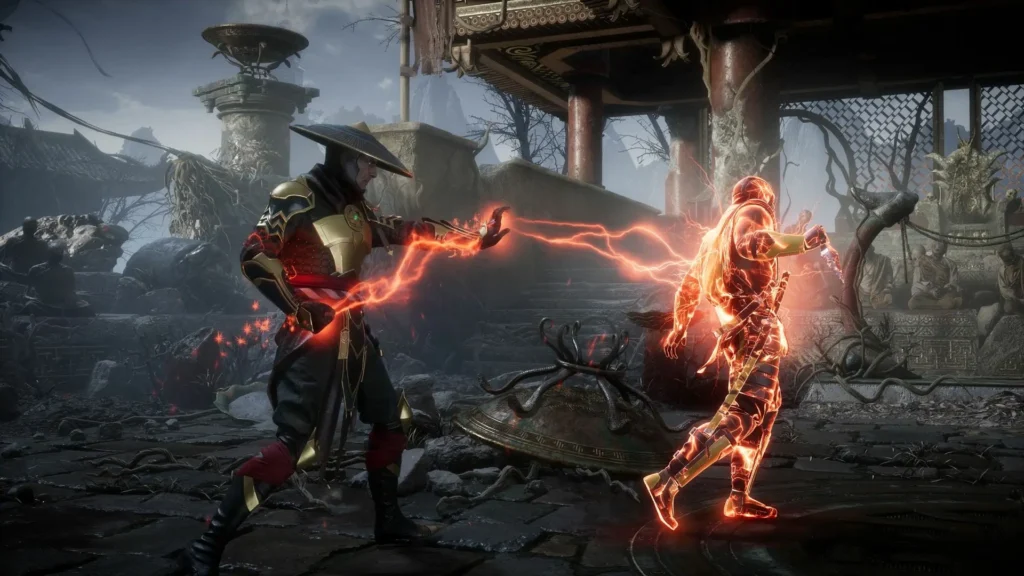
Conspicuously Absent: Smoke’s Vanishing Act in MK11
So why was Smoke absent from the roster in MK11? While he briefly appeared in the game’s story mode and as an Easter egg in the Krypt, he could not be selected as a playable character.
As it turns out, Smoke was killed off-screen by Sindel during the events between MK9 and MK11. His soul was later resurrected by Quan Chi and enslaved as a revenant servant in the Netherrealm.
MK11’s director Ed Boon cryptically explained Smoke’s absence by saying he “needed a rest”. This likely means the developers wanted to bench Smoke for this instalment and possibly bring him back in the future. While understandable, this was still a major letdown for Smoke devotees eagerly awaiting his return.
The Agony of Defeat: Fan Reactions to Losing a Favorite
As one of the series’ most iconic ninjas, Smoke’s omission from MK11 was met with strong criticism from players who relished using him.
After being included as DLC in MKX, fans hoped his run as a playable fighter would continue. Some speculated he may have been killed off in MK11’s story mode, but this was never officially confirmed.
Ultimately, while roster slots are limited in any fighting game, Smoke’s absence was a missed opportunity to showcase this beloved character after years of anticipation. For Smoke stalwarts, his disappearance was an unfortunate betrayal just when they hoped to reunite with their treasured main.
Will the Smoke Clear? The Hazy Future for the Cyber Ninja
Could Smoke make a comeback down the road? The clues point to yes. Ed Boon’s reference to Smoke needing “rest” indicates he may return refreshed in a future game like MK12. As a timeless ninja character with a rich backstory, he seems ripe for a triumphant return to playable status.
For now, Smoke remains confined to a revenant fate in MK11’s current timeline. But the clouds of mystery surrounding his absence may yet give way to clarity.
Perhaps one day this cybernetic warrior will emerge from the darkness to smoke his opponents once more. Until then, dedicated Smoke fans cling to the hope that their elusive main stays gone but not forgotten.
FAQ About Smoke in MK11
Why wasn’t Smoke a playable character in MK11?
Smoke was killed by Sindel between the events of MK9 and MK11. His soul was later resurrected as a Netherrealm revenant.
Does Smoke appear at all in MK11?
Yes, but only in minor cameo roles in the story and Krypt modes. He is not a playable fighter.
Will Smoke return in the future?
The hints from MK11’s director imply Smoke was benched for this game but could return refreshed in a future instalment like MK12.
Was Smoke killed off in MK11’s story?
Some fans speculated he may have been killed in the storyline, but this was never officially confirmed.
How did fans react to his absence from MK11?
Many dedicated Smoke players were extremely disappointed and critical of the decision to omit him from the roster.
What is Smoke’s backstory?
He debuted as a secret character in MK2 before becoming playable in MK3 as a human trapped in a cyborg body.
Conclusion
Smoke’s lack of playability in Mortal Kombat 11 was a crushing blow to fans of this iconic cyber ninja. While his brief cameos offered some solace, Smoke devotees were heartbroken that their beloved main remained confined to the sidelines. However, clues from the developers suggest Smoke’s absence from this instalment may prove temporary.
As a core piece of MK’s historic roster, hopes still linger that Smoke will one day dissipate his revenant chains and ignition his fighting spirit anew. For now, his stunned loyalists must find patience through the sadness. But the future yet may clear the air and see this fan favourite emerge from the fog to take his rightful place on the battlefield once more.
Review
Why Are PokeStops Yellow in Pokemon Go?

Have you ever been wandering around catching Pokémon in Pokémon Go and come across a mysterious yellow PokeStop? These brightly colored stops stand out from the usual blue ones dotted around the game map. When you see one it likely gives you pause, wondering what on earth is going on!
Well, wonder no more – this handy guide will explain everything you need to know about why some PokeStops turn yellow. We’ll cover what they mean, why they change color, how long it lasts, special events they are part of, and how to strategize when you spot one glimmering in the distance.
What Does a Yellow PokeStop Mean?
Let’s start at the beginning – what exactly do these yellow PokeStops signify when they pop up? Well, the main thing the bright yellow color signals is that another Pokémon Go player is actively using that particular PokeStop.
So it’s basically the game’s way of letting you know it’s currently occupied and to come back a bit later. Think of it like waiting your turn in line at the store. The yellow color is a visual cue that someone else got there right before you.
The yellow ring around the stop means you won’t be able to spin the photo disc center to collect your normal items like Pokéballs, potions, revives, eggs, and more. Those will have to wait until the other trainer finishes grabbing what they need.
This color change is temporary though, only lasting while the other player interacts with their phone at that spot. Once they close out of it, the PokeStop will shift back to blue again.
So in summary:
- Yellow PokeStop = another player is using it
- Can’t access items from that stop while yellow
- Color reverts when the player finishes
Pretty simple right? It’s just the game’s way of preventing multiple people from trying to tap on the same stop at the same time.
Why Do PokeStops Turn Yellow?
You might be wondering why PokeStops shift colors at all though, instead of just giving a message that it’s in use. Why make players pause and take note when they spot a vibrant yellow stop?
Well there’s a couple reasons for this:
- Fair Distribution: Having PokeStops turn yellow allows for more fair distribution of items. With visual cues, players know to wait their turn instead of clustered groups trying to tap at once. This maintains needed supply items for all users in the area.
- Polite Cue: The yellow color acts as a polite cue that another trainer is already there. This prompt allows players to exercise patience instead of getting annoyed that the stop isn’t working. It’s a friendly message to indicate “someone was here first, hang on a minute.”
- Efficiency: Changing stop colors also helps maximize gameplay efficiency. Players know not to waste time walking to and trying to tap on occupied stops. Instead they can focus efforts elsewhere until the stop is accessible again.
So in essence, consider yellow PokeStops as the game’s official signal to pause your stop-spinning efforts for a hot second out of courtesy!
How Long Do You Have to Wait at Yellow PokeStops?
A fair question when you come across an in-use yellow stop is “how long am I stuck here waiting?” Thankfully, you’re not looking at a crazy long line most times.
There’s no set duration that yellow PokeStops take to reset back to active status again. But from many players’ experience, it’s usually not longer than 30-60 seconds. Pretty quick!
The color change just lasts while the other gamer collects their dropped items, catches any attracted Pokémon, and closes out. Once they send that stop on its merry way, regular blue should reappear.
So if you see yellow, consider taking a breather, enjoying the scenery, and checking back in under a minute. Odds are good you won’t be stuck long before those helpful supply drops are available again!
Yellow PokeStops Signal Special Events
While yellow stops most often mean routine everyday use, they can also signify ongoing in-game events! Game-makers utilize the eye-catching color to indicate event stops. So yellow serves as an immediate cue to players that special activities are afoot.
During certain Pokémon Go events and storylines, yellow PokeStops increase wild spawns, supply different items, attract rare Pokémon, or unlock quest-based research tasks. It’s a great way for developers to direct your exploration and discovery to key points of interest.
Examples include:
- Increased spawns: Certain events feature yellow stops that spawned event-exclusive Pokémon frequently when tapped. Similar to how blue stops attract common monsters normally.
- Special items: Some storyline events had stops temporarily shift yellow to distribute special supplies. Like red, yellow, and blue shards players had to collect during the colorful Team Rocket takeover!
- New Pokémon: More recently, special golden yellow stops signify the monster Gimmighoul is lurking about during Paldean events! Activating one with a Golden Lure Module attracts this mysterious creature for a limited window.
So keep an eye out when yellow pops up—because exciting new encounters and exclusive goodies may coming your way! It’s a bright beacon guiding you toward animated adventures.
The Gimmighoul Connection
Let’s talk more about that special yellow PokeStop association with Gimmighoul. This unique Pokémon has an evolved mechanic requiring Gimmighoul Coins to trigger transformation. And yellow stops can help provide those!
Gimmighoul Coins are rare evolution-enabling items that sometimes drop when you spin golden stops. Using a Golden Lure Module increases odds. These precious coins then let you evolve a caught Gimmighoul into Gholdengo, counted in Pokédex numbers #999 and #1000!
So yellow stops represent rare opportunities during Paldean events to snag this limited evolution. Depending on the PokeStop location and items dropped, hanging around color-changed stops can seriously payoff for your collection!
Even if you don’t spot the elusive Gimmighoul, stockpiling some Coins for later provides serious bragging rights with these version exclusives. You may not see a golden stop for awhile, so pounce on those chances when spotted!
FAQ: Common Yellow Stop Questions
Still have some lingering questions around why weird color changes pop up suddenly? Check our yellow stop FAQs below for quick help:
What special items can you get at yellow stops?
During events: Event-exclusive items, evolution items like Gimmighoul Coins, special quest pieces
Normal gameplay: Same common items as blue stops once your turn comes around
Do all players see the stop as yellow, or only one person?
All players in the area will see that stop ringed in yellow when activated. It helps cue the entire crowd to pause spinning while in use.
Why don’t yellow stops show as occupied on the overall map view?
The color change only activates on close approach. This prevents cluttering the map constantly with temporary single-user visuals. Stops revert so quickly most times it’s not worth constant map overhaul.
Do I have to walk closer for my yellow stops to reset?
Nope! You can stay planted exactly where you are. The color will change back once the other player finishes collecting, regardless of proximity.
In Summary: Patience for Yellow Stops Pays Off
Hopefully this guide gave you all the details on yellow stop meaning and mechanics in Pokémon Go gameplay! To sum it up:
- Yellow rings indicate another player is actively using that PokeStop
- Change color temporarily while in use to cue waiting turn
- Stay attentive for special events signaled by yellow stops
- Gimmighoul and rare coins may lurk around golden stops!
- Never a long wait until accessible for you again
So don’t feel bummed when you spot a glimmering yellow stop in the distance. Just pause your approach, enjoy the suspense, and before long you’ll be back spinning for those key supply drops or rare discoveries! Respect for our fellow Pokémon trainers ensures fun gaming for all.
Review
What is the Best Graphics Card for $350-$400 in 2024?
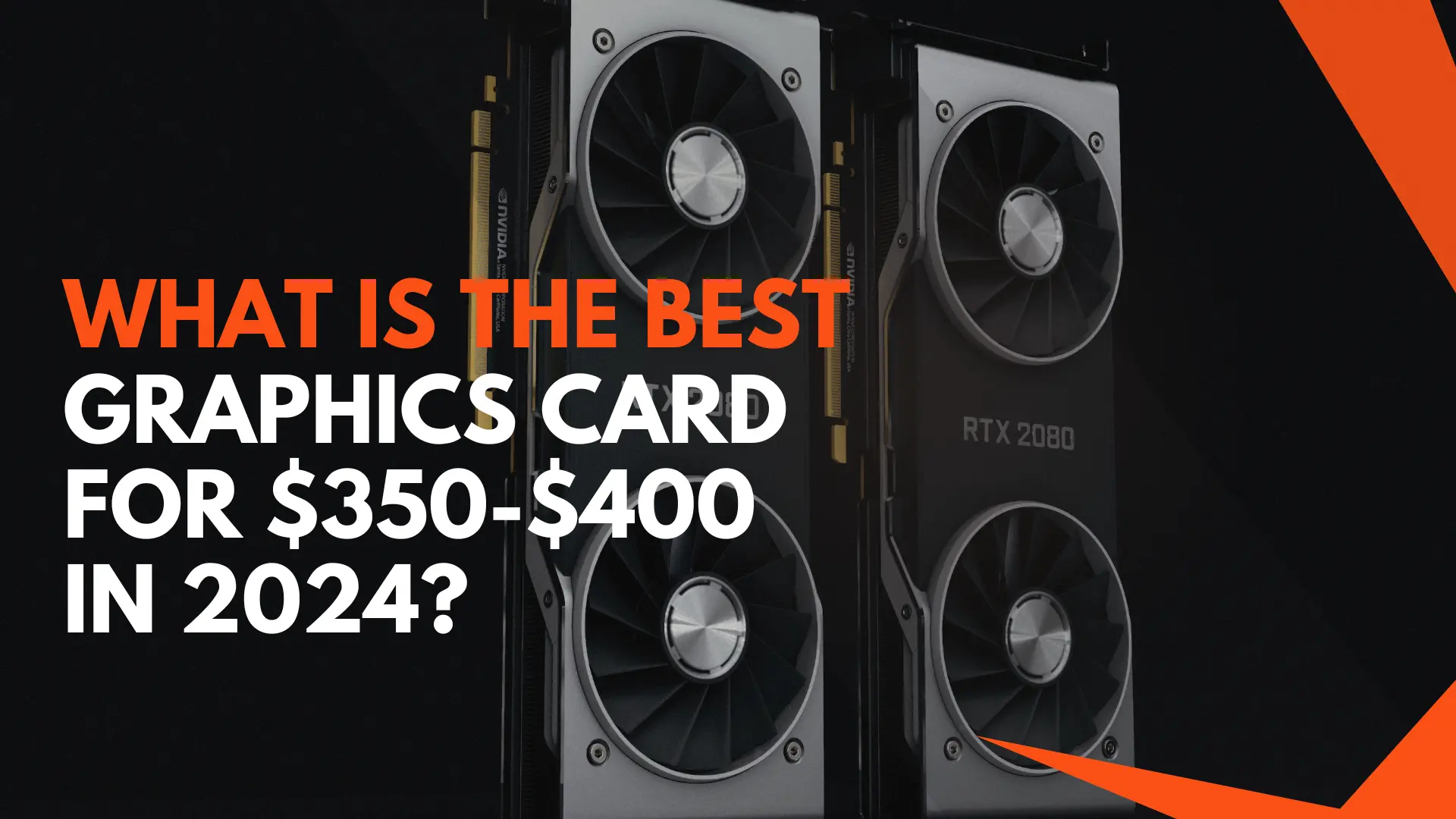
Key Takeaways:
- Used RTX 3060 Ti and RX 6800 XT offer tremendous value under $400
- New RTX 4060 and RX 7600 decent for latest features and architecture
- Intel Arc A770 stands out with 16GB VRAM
- Target smooth 1080p, playable 1440p gaming
When building or upgrading your gaming PC, picking the right graphics card can be tricky, especially if you’re on a budget. Getting the best bang for your buck is key to stretch those hard-earned dollars. I’ve built my fair share of rigs over the years, so let me walk you through some of the top options to consider in the $350-$400 price range as of 2024.
Used Cards Offer Excellent Value
If you don’t mind going the used route, you can score some serious horsepower for under 400 bucks. Nvidia’s RTX 3060 Ti and AMD’s Radeon RX 6800 regularly pop up on the secondhand market, sometimes even with warranty intact.
I managed to grab an EVGA RTX 3060 Ti off eBay for $380 recently. It had barely been used and worked like a charm. The 8GB of GDDR6 memory and beefy GPU encore provide killer 1080p performance and very playable 1440p frames too.
Scoring an RX 6800 for around $400 would be hitting the jackpot. This bad boy rivals the RTX 3070 with its 12GB VRAM buffer. Expect buttery smooth gaming, even in demanding titles. The best part is these used cards totally crush newer budget cards that cost more.
Just be sure to vet seller feedback and details carefully when buying used. But landing one of these gems will give your rig some serious muscle for less.
Latest Gen Cards – Middling Value
If you wanna rep team red or green with the latest RDNA 3 or Ada Lovelace graphics cards, the RX 7600 and RTX 4060 are around the $400 mark for brand new units.
AMD’s 7600 packs a respectable punch for 1080p gaming with its 8GB memory and revved up clock speeds from the new architecture. It’ll run laps around the previous gen 6600 XT. Plus it sips way less power – handy if you’re still rocking a 550W power supply.
Nvidia’s RTX 4060 may seem a bit light on VRAM at just 8GB, but features like DLSS 3.0, 5th gen Tensor and RT cores offset this. You’ll fly through 1080p and many 1440p titles thanks to frame generation and upscaling tech. The 4060 also brings AV1 encoding for streaming and efficiency gains from Ada Lovelace cores.
Ultimately though, these new-gen cards can’t quite match the absurd value that used flagships like the RTX 3060 Ti and RX 6800 provide. But if buying new for the latest architectures and features, they’re certainly not bad options.
The 16GB Intel Arc Contender
Finally, Intel crashing the dedicated GPU party with their Arc graphics cards has made things interesting in this price bracket. The Arc A770 is a standout here, packing a whopping 16GB of GDDR6 memory. This trounces Nvidia and AMD cards with only 8GB buffers.
Having that huge frame buffer allows the A770 to punch above its weight class for high resolution gaming. We’re talking smooth 4K potential if you don’t mind tweaking some settings. The card also chews through creative workloads like video editing and 3D modeling.
Now Arc and its drivers are still kinda fresh off the press, so some more optimization wouldn’t hurt. But assuming the drivers mature nicely, scoring an A770 under $400 would make for a productivity and rendering beast thanks to Intel cramming it full of encoding hardware.
Ideal Resolution Targets
Given their specs and pricing, used flagship cards like the RTX 3060 Ti and RX 6800 are best suited for flawless 1080p gaming and very playable 1440p. You’ll enjoy buttery smooth frame rates even in demanding titles with graphics maxed out. Makes me drool just thinking about it!
Newer budget cards like the 4060 and 7600 do admirably at 1080p, but can struggle a bit more driving higher 1440p resolutions in the latest games. Their 8GB buffers see them tapping out quicker compared to 12GB used flagships when textures and assets get dense.
Meanwhile the 16GB A770 has the VRAM muscle for solid 1440p and entry-level 4K provided the drivers and optimization is up to snuff. Fingers crossed Intel gets Arc to its full potential sooner than later!
Features to Keep in Mind
I’ll be upfront in saying raw performance for your dollar is paramount in this budget category. But that doesn’t mean features don’t matter! Having support for technologies like raytracing and upscaling helps boost visuals and FPS.
Nvidia’s DLSS and AMD’s FSR 2.0 give your chosen card a nice performance kick in supported titles – handy when chasing higher resolutions. These machine-learning algorithms smooth out frame rates without the big resource hit of brute-force rendering.
Meanwhile, real-time raytracing creates more realistic and immersive lighting, shadows and reflections by simulating the physical behaviour of light. Performance takes a sizable hit though, so lean on upscaling tech to counter this.
Encoder hardware found in NVENC and AMD AMF is beneficial too for streaming your slick game sessions to adoring fans. Intel’s media engine in Arc has tonnes of hardware for encoding/decoding also.
And don’t gloss over the card’s size, noise or outputs either. You’ll want sufficient ports for your monitor setup, plus the card being a thicc boi could limit your case options. Research thoroughly if going pre-owned!
Avoid Old Gen Cards
It can be tempting to save a few more bucks by looking at previous generation cards like the GTX 1060 6GB or RX 590. But unless you find an absolute steal under $300, I suggest avoiding older gen cards these days.
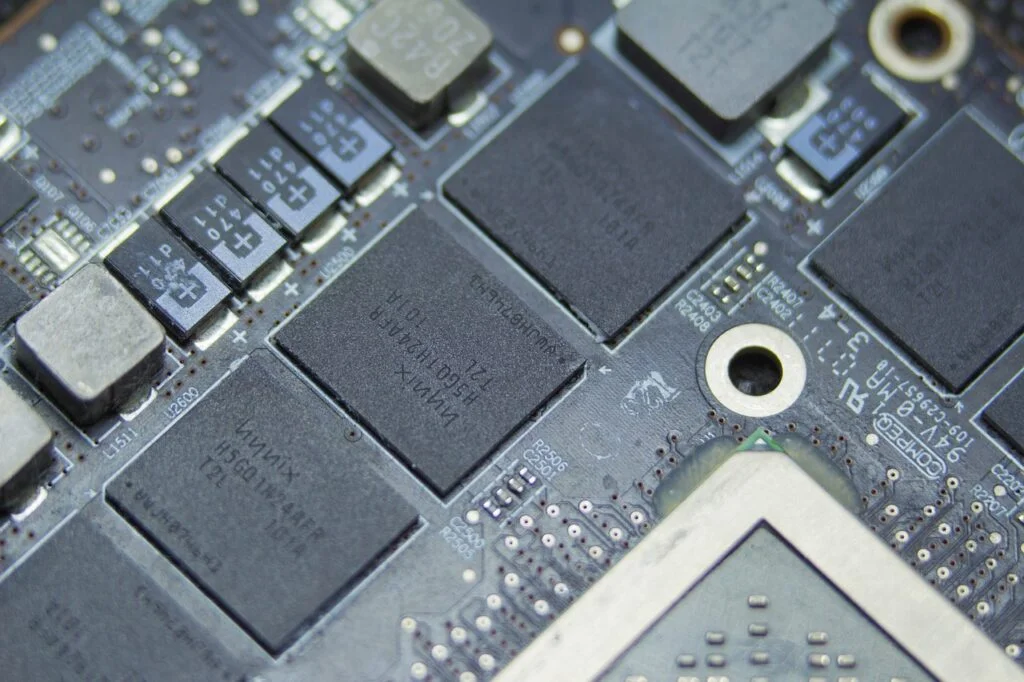
Modern titles demand more graphical horsepower, and new architectures like Ampere and RDNA 2 leave old Pascal and GCN in the dust efficiency-wise. Plus you’ll miss out on the latest rendering, lighting and upscaling tech that really elevates gaming visuals. Simply put, today’s games favor today’s GPU architectures.
Wrapping Up
Whew, that ended up being way more info than planned! But when that upgrade itch strikes, arm yourself with knowledge before swiping the credit card. There are fantastic options under $400 in 2024 – you just need to weigh up new vs used, raw performance vs features, etc.
I’m hopeful this overview helps you narrow down what’s best for your particular rig and usage. Let me know which card you end up going with or if you have any other questions down below!
Happy gaming 🙂
FAQ
What is the best used graphics card for under $400?
The RTX 3060 Ti and RX 6800 (XT) offer tremendous performance for under $400 on the used market. When bought secondhand, these cards often outpace newer budget cards that cost more. Just be sure to vet details carefully when buying used.
Should I buy a new budget card like the RTX 4060 or RX 7600?
The 4060 and 7600 are good mainstream options if you want the latest architecture and features. Performance is solid for 1080p gaming, but can struggle at higher 1440p resolutions compared to used flagships. They also sip less power and tend to run quieter than previous gen cards.
Is Intel Arc worth considering in this budget range?
The Arc A770 is notable for packing 16GB of VRAM for under $400 which helps significantly with high resolution gaming. Performance is competitive with Nvidia and AMD too. Just keep in mind Arc drivers are still maturing so optimization has room for improvement.
What resolution should I target with a sub-$400 card?
Used flagship cards like the RTX 3060 Ti and RX 6800 are great for smooth 1080p and very playable 1440p gaming. Newer budget cards excel at 1080p but can struggle to maintain high fps at 1440p in demanding titles. The 16GB A770 has potential for entry level 4K if drivers improve.
Should I consider older generation cards to save money?
Avoid older gen cards unless you find an exceptional discount under $300. Previous architectures like Pascal and GCN are much less efficient than today’s GPUs. Modern games also leverage new tech for better visuals that old cards lack, so best to stick to current or last gen.
Review
Is an RTX-3080 Still Good in 2023?
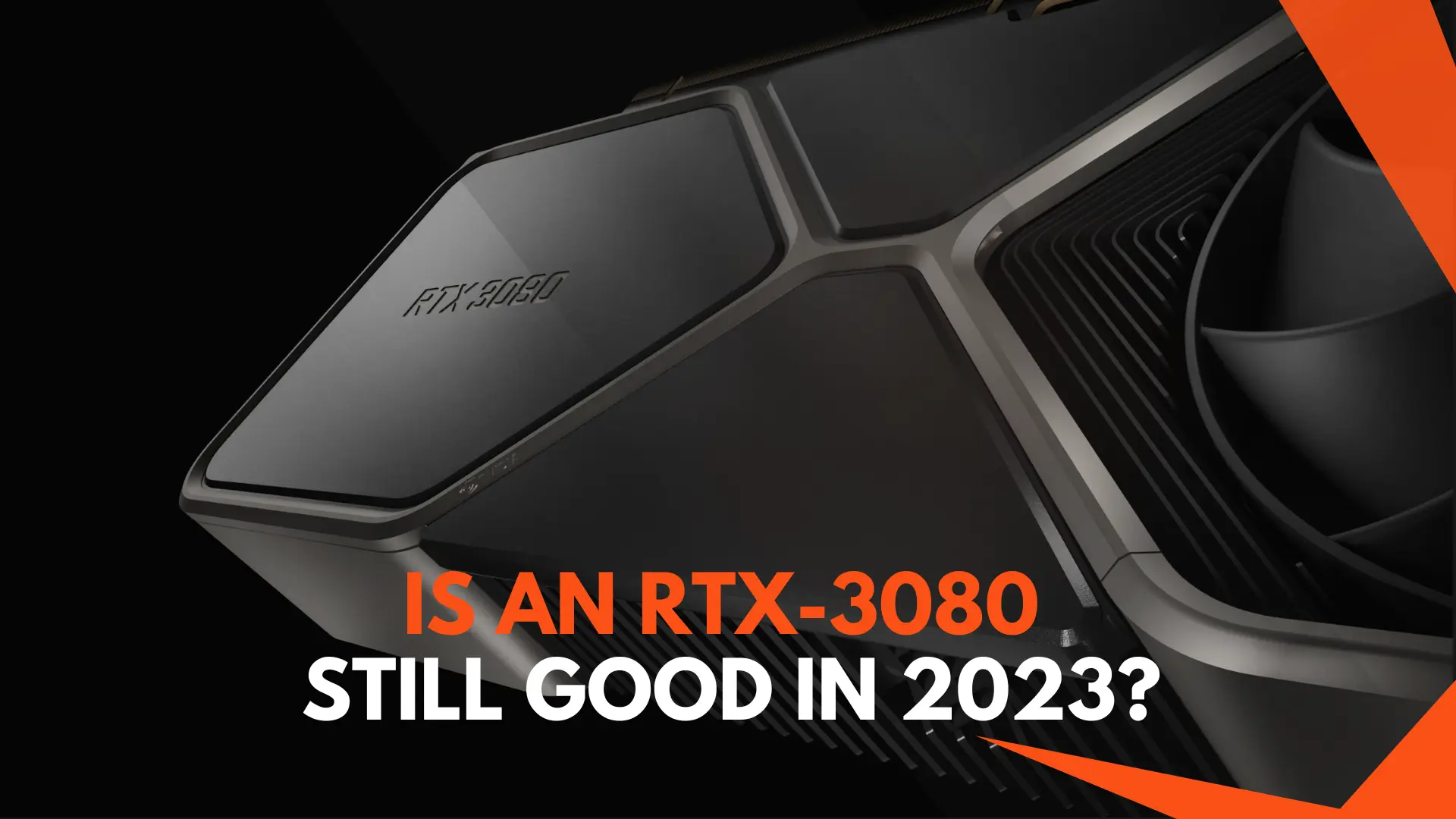
Key Takeaways:
- The RTX 3080 remains an exceptional 1440p and 4K gaming card in 2023
- It delivers high frame rates and enables immersive gaming experiences
- Ray tracing and DLSS provide enhanced visuals without compromising performance
- Excellent content creation capabilities for video editing, 3D modelling, etc.
- Still, great value, especially if found at discounted used prices
- Availability remains limited due to ongoing supply constraints
The Nvidia GeForce RTX 3080 was first launched in 2020 as a high-end graphics card for gaming enthusiasts. With specs like 8704 CUDA cores and 10GB of GDDR6X VRAM, it remains one of the most capable consumer GPUs. But with new graphics cards releasing all the time, is the venerable 3080 still worth buying in 2023? Let’s find out.
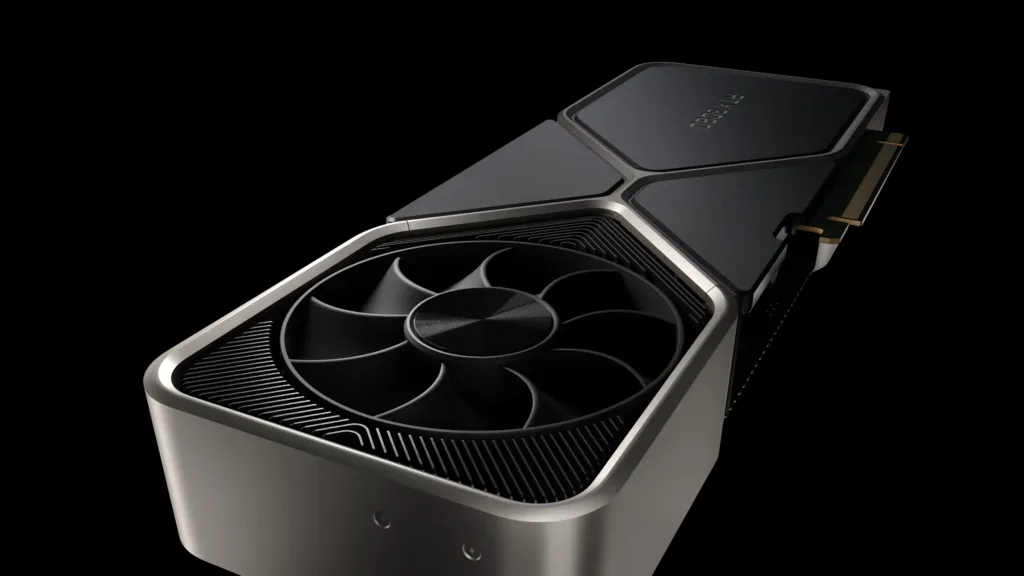
Still Delivers Blazing Fast 1440p and 4K Gaming
For those playing at 1440p resolution, an area where many dedicated gamers are, the RTX 3080 won’t break a sweat. It easily pushes high refresh rates above 100+ FPS for gorgeously smooth gameplay even in demanding titles with all settings maxed out.
Immersive open-world games like Cyberpunk 2077 and Assassin’s Creed Valhalla that cripple lesser cards are child’s play for the 3080 at 1440p. So you can crank everything to ultra and enjoy them as the developers intended.
The card also handles 4K gaming like a champ. While reaching the full 60 FPS at max settings in the most cutting-edge games may not always be possible, with some reasonable tweaks you’ll be able to enjoy stunning 4K visuals with buttery performance. Between the high resolutions and frames, it’s an incredible gaming experience.
So if you have a high refresh rate 1440p monitor or 4K display, the 3080 remains in a great position to feed them plenty of pixels for jaw-dropping visuals that are also wonderfully fluid and responsive thanks to the high FPS.
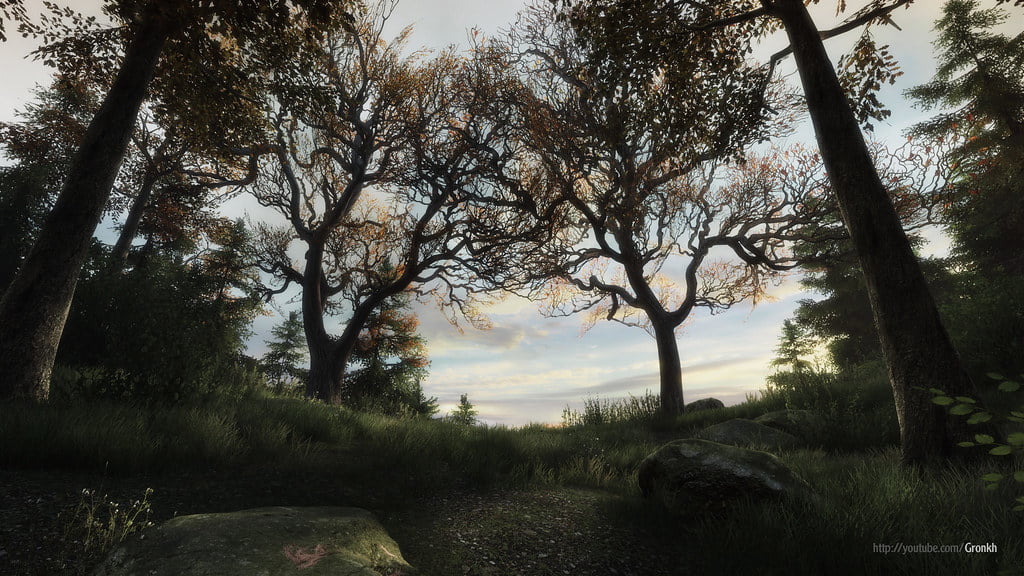
Ray Tracing and DLSS Provide Cutting Edge Visuals
As one of Nvidia’s RTX cards, the 3080 is armed with dedicated ray tracing hardware support. This enables advanced light rendering, reflections, and shadows in games for a huge leap in realism. Turning this on tanks performance if you lack the special cores though.
But the 3080 has enough brawn to handle ray tracing fairly well, allowing you to enjoy the immersive visual benefits without as big a performance penalty. Especially with help from DLSS rendering, which uses AI to boost frame rates.
DLSS is more important than ever, as it gives demanding games a free performance boost that lets the 3080 better handle cutting edge graphics options like ray tracing. Nvidia also continues improving DLSS so it looks even sharper.
Thanks to its beefy specs and hardware boosts via DLSS and ray tracing cores, an RTX 3080-equipped gaming rig remains capable of playing the latest titles with every bell and whistle turned on for incredible visuals paired with solid speeds.
Dominates Esports and Competitive Gaming
For esports and competitive gaming fans, frame rate is king. And the RTX 3080 delivers staggeringly high frame rates, even at max settings. We’re talking 360 FPS in Fortnite or 500 FPS in Valorant depending on your system.
This enables you to take full advantage of high refresh rate 240Hz or even 360Hz gaming monitors for incredibly fluid motion with responsive controls. Which can translate into better performance in multiplayer shooters and other twitch gaming titles.
So if you’re looking for no compromises speed for your favorite competitive games, the RTX 3080 is complete overkill in the best possible way. You could honestly get by with a lesser GPU and lowered visuals, but it’s sure nice to crush esports games at 1080p or 1440p ultra.
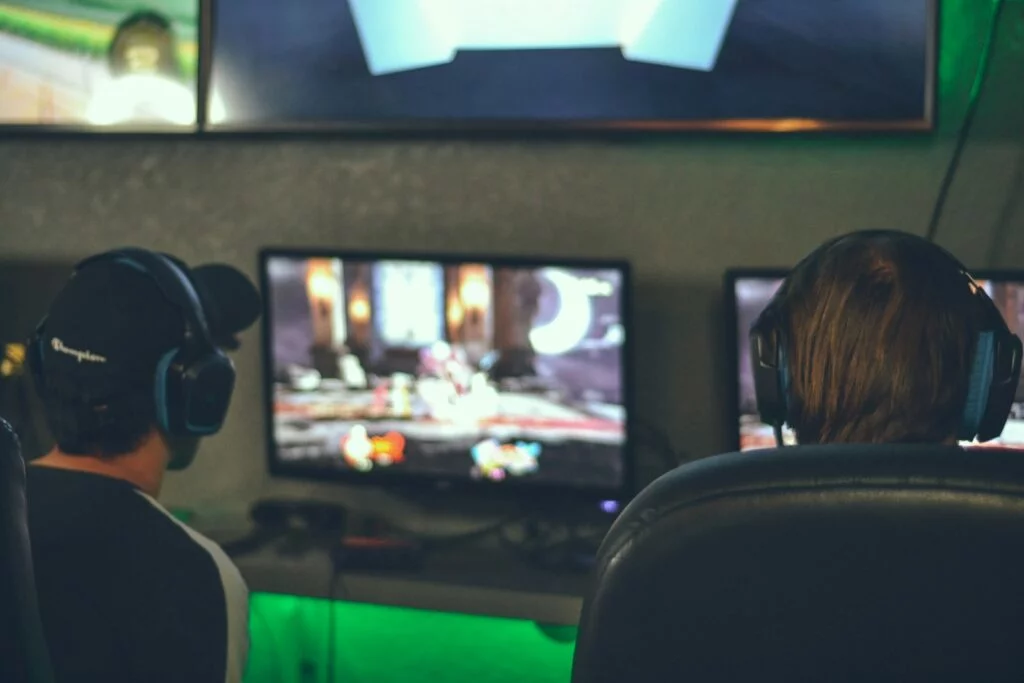
Still a Workhorse for Content Creation
Beyond gaming, Nvidia RTX cards also offer fantastic performance in creative applications like video editing, 3D modeling, and game development software that can leverage the GPU.
The RTX 3080 flies through tasks like rendering high resolution footage, manipulating complex Blender scenes, or building intricate game worlds with Twinmotion thanks to its ample CUDA cores and fast 10GB memory.
So game developers, animators, CGI artists and other creators will find the 3080 a faithful companion that massively accelerates workflow. Letting you spend more time creating rather than waiting around for progress bars.
Considering the still unmatched creative capabilities on offer, professionals can comfortably stick with a 3080 in 2023 rather than feeling pressured to upgrade for significantly better application performance.
Pricing and Availability – Buy Used for the Best Value
When it launched the RTX 3080 cost $699, but street pricing has been inflated well above MSRP since 2020 due to constrained supply and mining demand. In 2023, expect to pay $800 to $1,200 for retail models depending on promotions and models.
However, used RTX 3080 cards can provide much better value if you shop around. Pre-owned models tend to sell for $600 to $800 on eBay and r/hardwareswap, allowing you to get the GPU at a healthy discount. Just be sure to check the seller’s reputation.
Regardless of buying new or used though, getting your hands on one of these popular cards continues to require patience and persistence. The 3080 remains in short supply due to factors like pandemic related production issues and the demand spike from crypto mining (now winding down).
Retailers receive very limited and unpredictable restocks that sell out nearly instantly. So landing a 3080 still requires monitoring stock trackers, joining Discord groups, and a bit of luck.
The Verdict – Still Worth It For Most Gamers
The RTX 3080 manages to be an exceptional 1440p and 4K gaming card two and a half years after first hitting the streets. It runs modern titles incredibly well, shoulders cutting edge effects competently thanks to dedicated hardware, and enables you to crush competitive multiplayer games.
Unless you must have absolutely max settings and frame rates, or specific capabilities only offered in something like an RTX 4080, the venerable RTX 3080 remains a smart choice to build or upgrade a high end gaming PC with in 2023. Especially if snagged at an appealing used market price.
For most PC gamers and creators, the RTX 3080 still hits a great balance of performance versus cost. Allowing you enjoy all that gaming and graphics applications can offer without completely breaking the bank. It may not have the shine of brand new hardware, but remains plenty capable and compelling.
FAQ
Q: How does the RTX 3080 perform for 1440p gaming?
The RTX 3080 delivers outstanding 1440p gaming performance. It provides very high frame rates over 100 FPS even in demanding titles with max settings, enabling incredibly fluid gameplay. The 3080 is built for smooth ultra visuals at 1440p.
Q: Can the RTX 3080 handle ray tracing and DLSS?
Yes, the dedicated ray tracing cores in the RTX 3080 enable realistic real-time ray traced lighting and reflections without tanking performance, especially when paired with DLSS. Its AI rendering boosts frame rates further, letting you max graphics.
Q: Is the RTX 3080 still good for content creation in 2023?
Absolutely. With its high CUDA core count and fast GDDR6X memory, the 3080 blows through video editing, 3D animation, game dev software, and other creative applications. It remains one of the best GPUs for accelerating workflows.
Q: Where can I find an RTX 3080 for a reasonable price?
Your best bet is checking used marketplaces like eBay and r/hardwareswap for second hand RTX 3080 cards, which tend to sell for $600 to $800. Much cheaper than current inflated retail pricing. Just ensure the seller has good feedback.
Conclusion
Even after newer graphics cards have launched, the venerable RTX 3080 still stands tall as a top notch GPU for high end gaming and content creation. It continues delivering excellent 1440p and 4K gaming experiences while outpacing lesser cards in creative applications – especially at discounted used pricing.
For most gamers and creators, the RTX 3080 strikes a superb balance between price and performance. Making it easy to recommend sticking with even in 2023 rather than feeling compelled to upgrade to something newer but substantially more expensive like the 4080. Unless you absolutely must have the highest frames and settings, the 3080 remains a smart choice.

 Games Like2 years ago
Games Like2 years agoBest Games Like Unblocked Games 77 | Top Alternatives

 Gaming1 year ago
Gaming1 year agoFree Fire Best Sensitivity Settings For Headshot

 Top 102 years ago
Top 102 years agoThe Top 20 Android Horror Games to Play with Friends

 Game Room Ideas12 months ago
Game Room Ideas12 months ago52 Incredible Game Room Ideas to Elevate Your Home Entertainment

 Tutorials2 years ago
Tutorials2 years agoHow to Fix the PS5 Green Screen – Tips To Try

 Tutorials12 months ago
Tutorials12 months agoHow to Play Fishbowl Game: Rules, Regulations, and Tips

 Top 1012 months ago
Top 1012 months ago10 Best Offline Mobile Games For Long Car Rides 2024

 Top 102 years ago
Top 102 years agoThe 25 Best Offline iPhone Games to Play Without Internet









